SRAM Eagle 90 Transmission
Test Duration: 7 months
Test Locations: Western Washington
Blister’s Measured Weights:
- Eagle 90 Derailleur: 392 g
- Eagle 90 Shifter: 116 g (w/o discrete clamp)
- Eagle 90 Cassette: 444 g
- Eagle 90 165 mm Crank (w/ 32 tooth chainring, no bash guards, no bottom bracket): 730 g
MSRP:
- Eagle 90 Derailleur: $210 USD
- Eagle 90 Shifter: $55 USD
- Eagle 90 Cassette: $275 USD
- Eagle 90 Crank (no bottom bracket): $170 USD
Bolted To: Trek Top Fuel, Contra MC, Chromag Reazon
Reviewers:
- Zack Henderson: 6’, 165 lb / 183 cm, 74.8 kg
- David Golay: 6’, 160 lbs / 183 cm, 72.6 kg
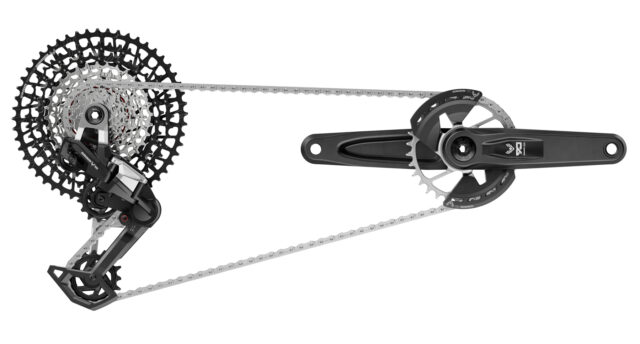
Intro
We get a whole lot of bikes coming through our doors with SRAM’s electronic Transmission builds, and have generally been impressed with their shifting accuracy and durability. Our biggest question was whether the mechanical versions could match that dependability while removing some of the frustration of remembering to charge batteries — and while that’s largely been the case with the Eagle 90 Transmission setup we’ve been riding, there are still some things about Eagle 90 Transmission that could be improved.
[For a more complete rundown on the design of the Eagle 90 group and its budget-oriented Eagle 70 sibling, check out our First Look on the pair.]
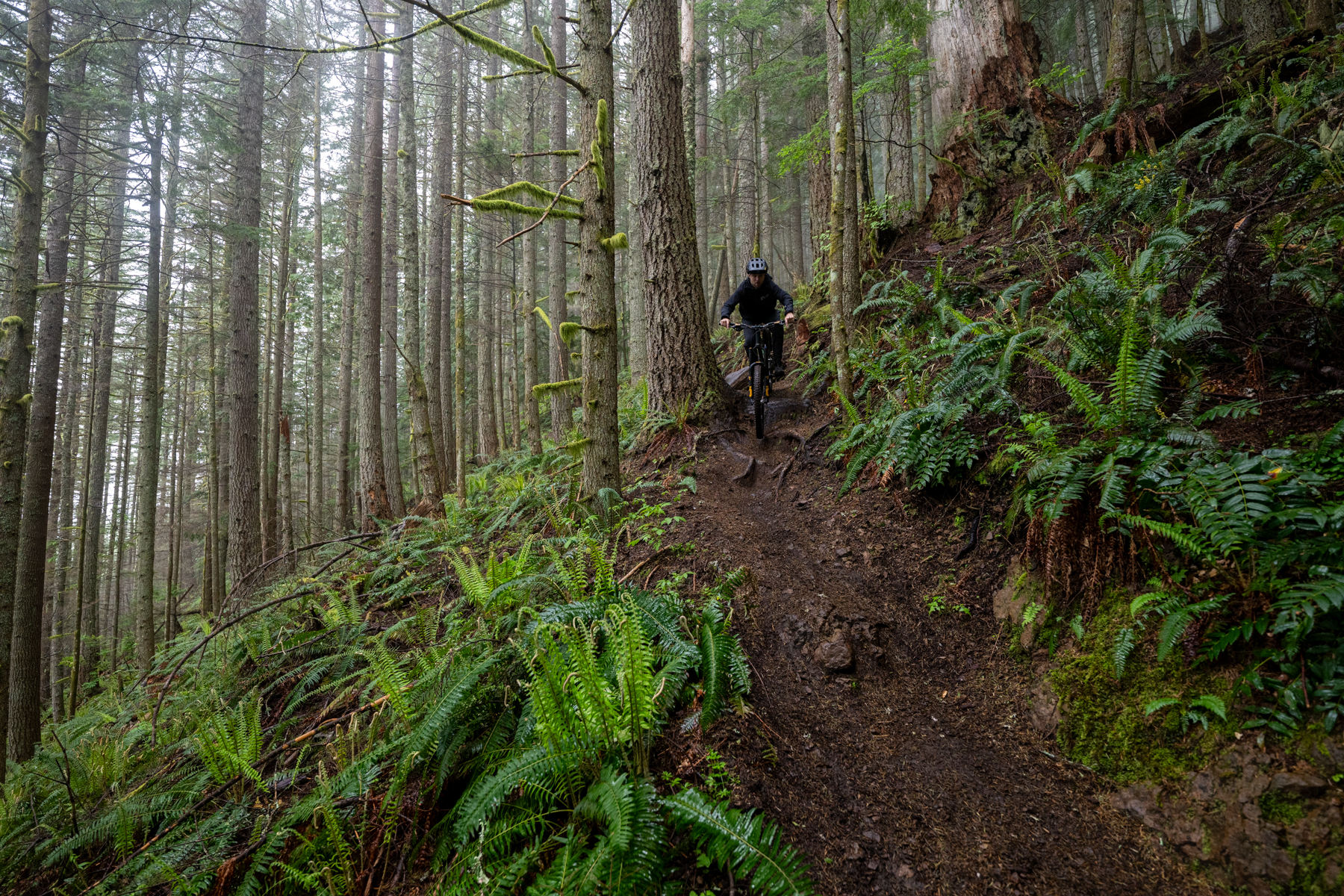
On-Trail Performance
Zack Henderson (6’, 165 lb / 183 cm, 74.8 kg): We spent a lot of time digging into the details of the new SRAM Eagle 70 and Eagle 90 Transmission groupsets in our First Look, but here we’ll be focusing on how the 90 version has performed over 7 months of trail time.
Overall, shifting performance has been very good. The Eagle 90 system relies on the same chain and cog profiles used for the electronic Transmission setups (the chain is identical to the GX Transmission one, and the cassette is also the same as GX Transmission with a different finish), and the result is a similarly smooth, predictable shifting behavior. Particularly under power, transitions between gears feel super smooth, with little to no skipping or unwelcome noise.
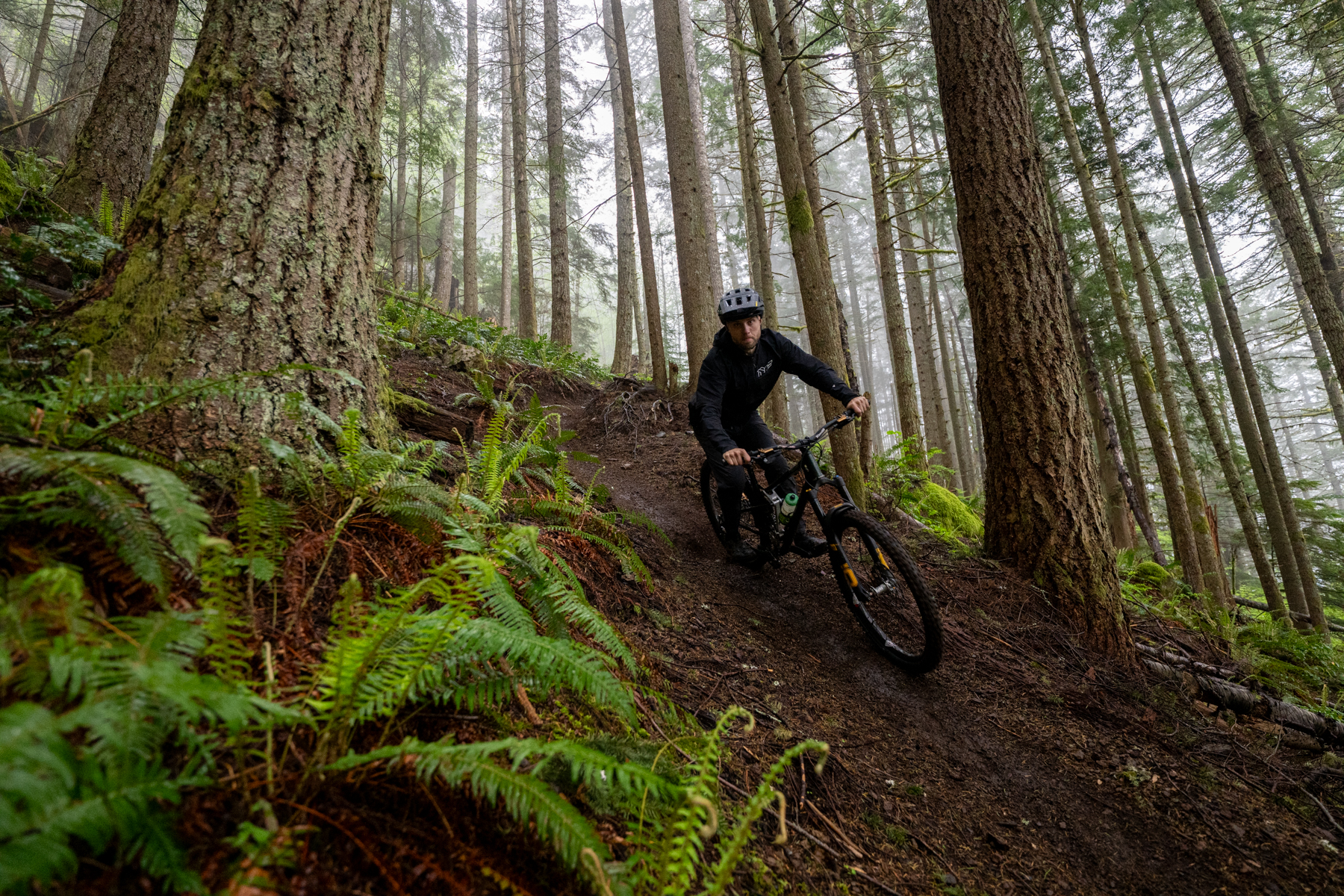
David hinted at this in his recent writeup on the new Shimano XTR M9200 Di2 drivetrain, but one of my hangups with SRAM’s electronic Transmission systems has been the shift speed. By some combination of the derailleur’s movement speed and the tooth profiles on the cassette, Transmission setups consistently shift accurately, but with slower gear changes as compared to the Hyperglide+ designs from Shimano.
While SRAM recently released a firmware update for their electronic Transmission systems that supposedly increases shift speed (I haven’t had a chance to try it yet), I’ve found that the mechanical Eagle 90 system manages to overcome some of the lag that I’ve felt with the electronic system, but still doesn’t quite reach the speed of Shimano’s Hyperglide+ design. Some of that is undoubtedly down to the fact that my preferred XT and XTR-level mechanical Shimano shifters can handle double-shifts at the upshift paddle and move up to three gears on the downshift, compared to just one on the upshift and two on the downshift with Eagle 90, but I also think there’s something going on with the Transmission cassette’s shift ramps that increases smoothness over Shimano Hyperglide+ at the expense of some urgency.
In practice, I find even the mechanical Eagle 90 Transmission to be a bit less likely than Shimano’s mechanical drivetrains to overshoot a cog or otherwise suffer when I don’t execute a tidy shift at the lever. Like any mechanical shifting setup, I found Eagle 90 to require occasional turns of the barrel adjuster, but never more than other mechanical drivetrains on the market. SRAM’s electronic Transmission setup is still more unflappable overall, with the precision of the electronic actuator delivering more consistency, but Eagle 90 is still very good.
David Golay (6’, 160 lb / 183 cm, 72.6 kg): The shifting performance of the Eagle 90 group is generally pretty solid, particularly given that it’s positioned as a mid-tier offering rather than a flagship one. Shimano’s mechanical groups still have an edge when it comes to outright shifting speed, but the Eagle 90 setup can run across the cassette plenty quickly for my taste, and apart from needing to readjust the cable tension after a ride or two (typical for a newly installed mechanical shifter / derailleur), I don’t recall ever missing a shift or feeling the chain skip on the cassette.
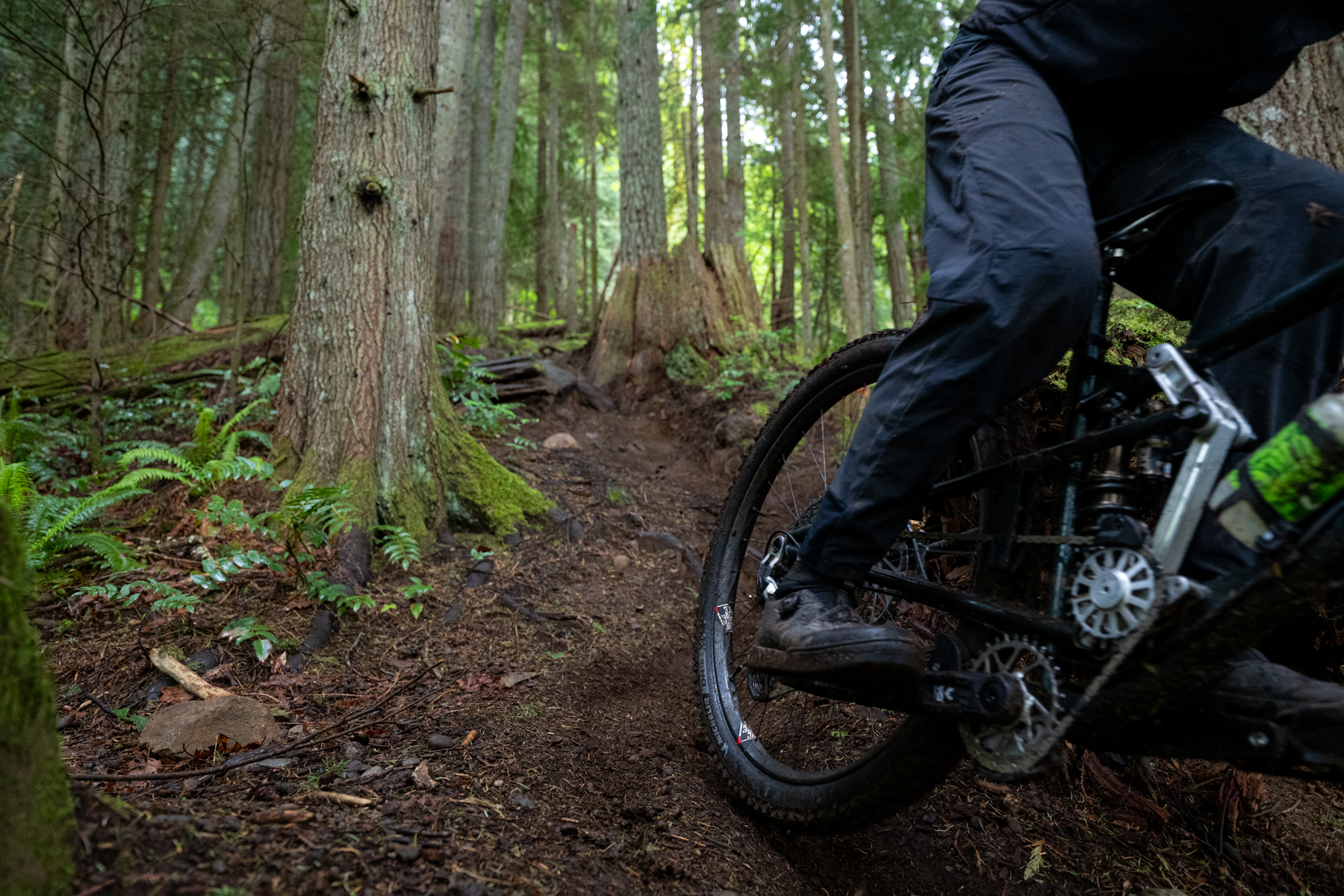
The fact that the Eagle 90 shifter is limited to downshifting two gears at a time probably helps. It’s definitely possible to attempt too many downshifts in one fell swoop on a lot of other mechanical groups, especially if you’ve gotten bogged down in a too-high gear and are pedaling at a low cadence, but the Eagle 90 group does a reasonable job of letting you shift fast enough for most situations while keeping some guiderails in place to stop you overdoing things.
I would characterize the shifting performance of the Eagle 90 group a little differently from Zack, though. Particularly compared to Shimano’s 12-speed mechanical groups, the Eagle 90’s shifting stands out to me for being a notch more accurate, but not quite as smooth. A cleanly executed shift on, say, a Shimano XT mechanical group is a little quieter and produces slightly less feedback through the pedals. It’s just also easier to try to shift too quickly on the Shimano setup and produce a less-than-fully-clean shift. The Eagle 90 group doesn’t feel quite as smooth to me under ideal conditions, but it’s more consistent if your shifting technique is sloppier.
Most of the time, though, the difference in shifting performance between the two isn’t huge. A Shimano XT mechanical combo shifts a little faster and a little more smoothly if you use decent technique and finesse it a little; the Eagle 90 group feels a touch clunkier but is more willing to just bang into the next gear no matter what, including under power.
Eagle 90 Transmission Shifter
Zack: The Eagle 90 Transmission shifter is fine, but nothing special. The construction is plastic-heavy, with ergonomics that should feel pretty similar to SRAM’s older, non-Transmission shifters. The primary and slight difference that I noticed is that the upshift paddle has a more cupped shape to cradle the thumb a bit more.
Overall, I really like SRAM’s shifter ergonomics, but things fall a bit short for me in the performance department. Downshifts in particular feel pretty vague and mushy — not bad compared to other, more budget mechanical shifters on the market (e.g., Shimano SLX and Deore, SRAM GX Eagle), but not nearly as crisp and sharp as options like Shimano’s XT and XTR, or SRAM’s XO1 and XX Eagle. There’s also an uncovered hole in the side of the shifter where the cable is inserted and removed, creating an opportunity for water and dirt ingress, which could very well hurt longer-term performance even if it wasn’t a problem during the term of the test.
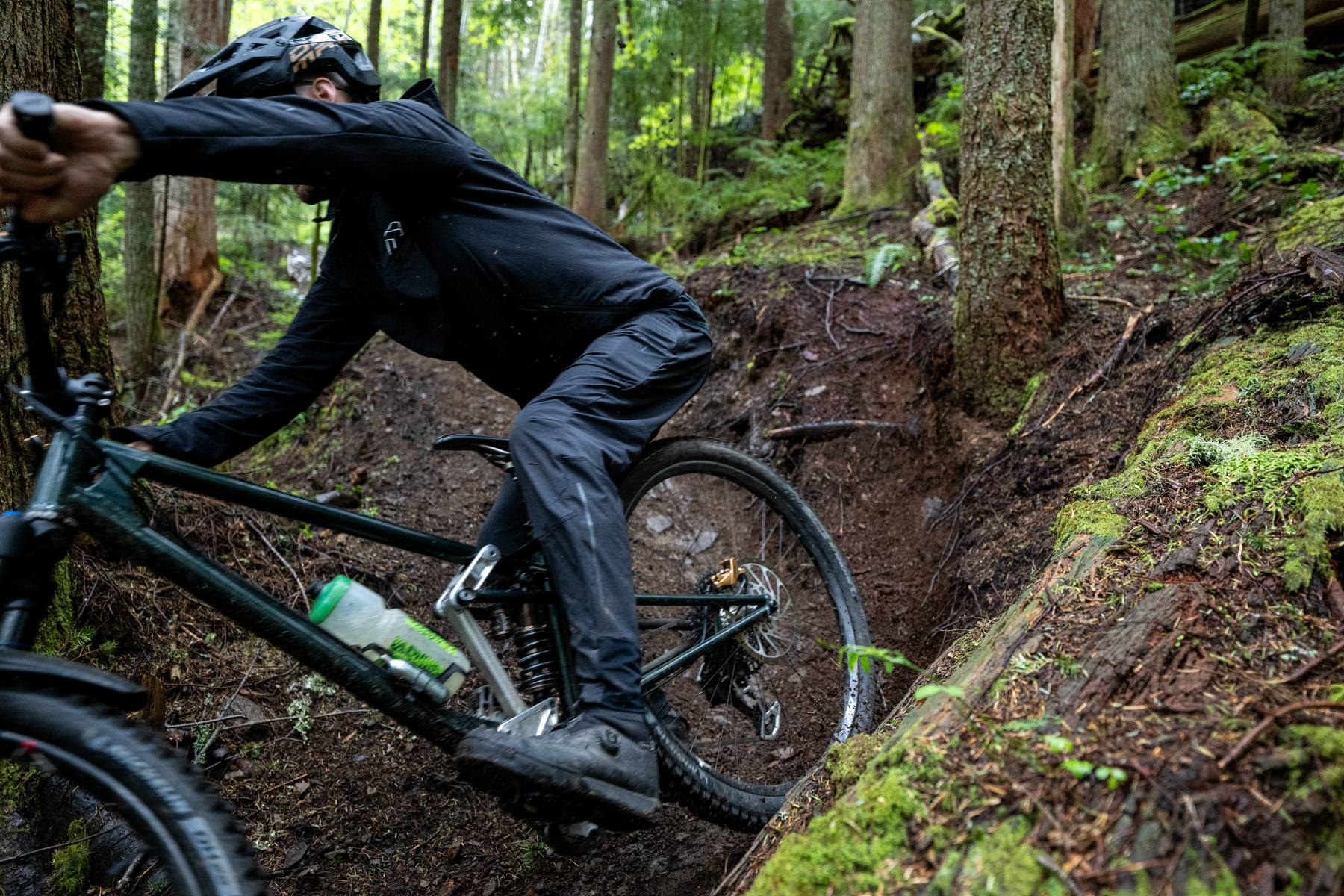
Given the Eagle 90 shifter’s price of $55, that’s entirely acceptable, but given the great performance of the whole system in executing shifts, I’d love a higher-tier option to elevate the tactile experience to something like that of SRAM’s XO1. Unfortunately, SRAM’s older shifters (like those from XO1 Eagle) aren’t compatible with their Transmission systems, so we’ll just have to wait and see if they (or anyone else) release any higher-end shifter options.
David: To be blunt, the shifter is easily my least favorite part of the groupset. It gets the job done, and the ergonomics are pretty good from a paddle placement standpoint (as Zack noted, it feels similar to SRAM’s pre-Transmission Eagle groups on that front), but “mushy” is an apt descriptor for the feel of the downshift paddle in particular.
Given that there are only two clicks available per paddle stroke on the standard version (and one on the single click eMTB option), it’s not a huge deal from the standpoint of knowing how many gears you’ve shifted through. But one of the best things about a good mechanical shifting setup is being able to feel not just that you’ve hit the click to index the shifter into the next gear at the shifter end, but to finesse the chain into place with a little extra movement of the thumb paddle if needed to complete a downshift, and it’s harder to do that cleanly with the Eagle 90 shifter than it is with ones that feature crisper action and more obvious detents between shifts.
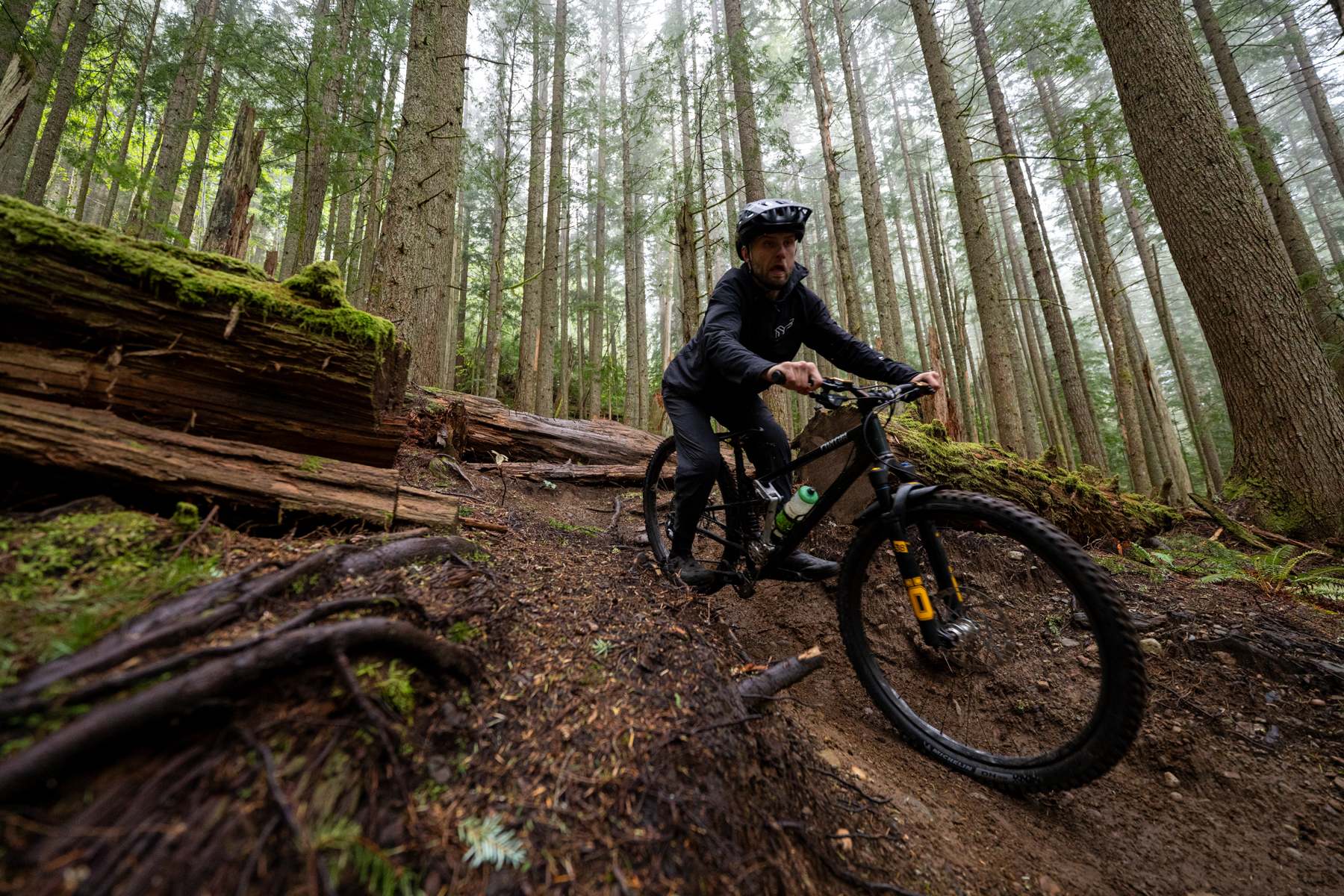
To be fair, we’re talking about a shifter that retails for $55, and I’m complaining that it doesn’t feel like a more premium offering. The problem is that there isn’t a higher-end version on offer for folks who would be willing to pay more for a better-feeling mechanical Transmission shifter, since the cable pull ratio doesn’t match SRAM’s non-Transmission Eagle shifters. The Eagle 90 shifter is also arguably an improvement over the Pod Controller that SRAM debuted with the original electronically-actuated Transmission groupsets, given that those offer little in the way of tactile feedback. Granted, there’s also arguably less need for tactile feedback on an electronic shifter, due to the binary nature of its actuation (in contrast to a mechanical one, where there’s a little more finesse involved), but I’m a huge fan of Shimano’s new Di2 electronic shifters largely because they offer such nice tactile feedback, and none of SRAM’s Transmission shifters (electronic or mechanical) are great on that front.
Eagle 90 Transmission Derailleur
Zack: The Eagle 90 derailleur may not be positioned as a high-end derailleur, but been rock solid in its performance. As the first mechanical derailleur to use SRAM’s Direct Mount architecture, it of course requires a UDH-compatible frame, but I’m increasingly convinced that the Direct Mount system improves both derailleur durability and overall stiffness. I’ve subjected the Eagle 90 derailleur to a few good hits, and while it doesn’t have the electronic recovery system of the battery-powered Transmission derailleurs, it still hasn’t suffered any damage of note. While the clutch tension isn’t especially high, SRAM’s clutches remain significantly more consistent and well-sealed than the clutches used on Shimano’s mechanical derailleurs.
After a full summer of moon dust, the pivots still feel precise and the pulleys still turn smoothly. Should anything happen down the line, it’s very cool that SRAM now makes replacement small parts available, too.
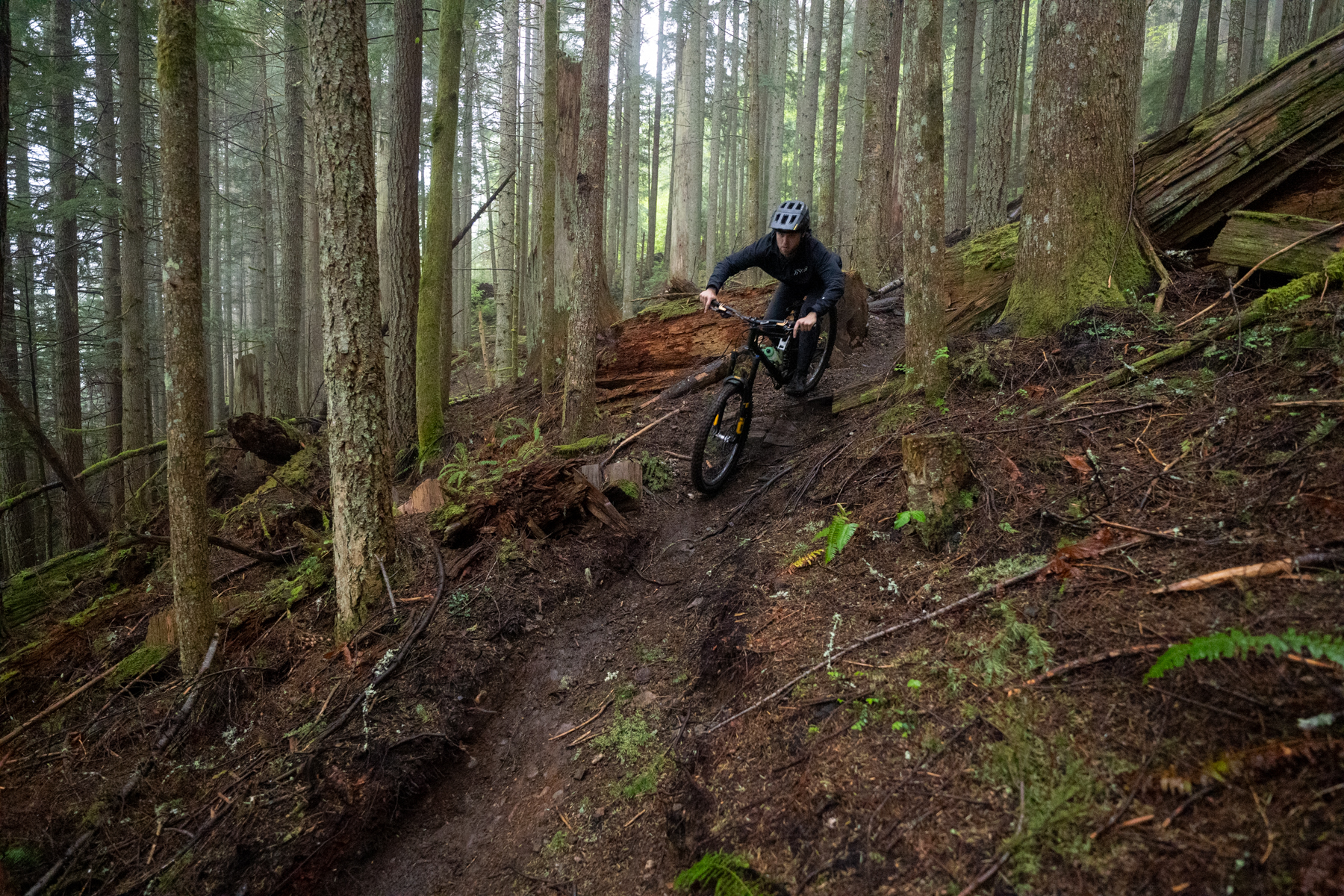
David: I’ve also been impressed with the durability of the Eagle 90 derailleur. It has shrugged off some substantial impacts without incident and hasn’t developed any notable play or slop over a season of heavy use. SRAM has touted their “Full Mount” direct mount interface first and foremost for its durability, but I suspect that the stiffness of the mount plays a substantial role in the excellent shift accuracy of all the Transmission groups — the Eagle 90 one included.
The clutch in the Eagle 90 derailleur (which is shared with the electronic T-Type derailleurs) isn’t adjustable, but it has held up better than the ones used in the pre-Transmission Eagle derailleurs (the wireless AXS versions in particular). Replacement clutches are sold as part of a full cage and pulley kit, and while they aren’t cheap, that’s still a step in the right direction compared to SRAM’s pre-Transmission Eagle derailleurs.
Eagle 90 Crank, Cassette, and Chain
Zack: The Eagle 90 crank is relatively unremarkable, going about its duties without a fuss. The arms appear identical to those of the electronic GX Transmission groupset, just with a black finish in this case. Especially on my Top Fuel, which sees some hard pedaling, I could feel a shade more flex out of them than with some higher-end cranks like the Race Face Turbine, but the main concern on a lightweight bike like that is that they’re rather heavy at 730 g without a bottom bracket, including the stock steel chainring. I’d expect the steel ring to last nearly forever, but I ended up throwing on a spare chainring that I had lying around from an X0 crankset, which dropped 70 g (both were 32 tooth rings).
The Eagle 90 cassette is the same as the GX Transmission one, with a different finish. The chain is also the same as GX Transmission. The cassette isn’t particularly lightweight at 444 g, and I haven’t found the chain to be as durable as the more expensive XO Transmission one, but they both proved to be solid performers, even if I’ll likely reach for a higher-grade chain when this one needs replacement.
David: I don’t have much to add here. The rest of the Eagle 90 group isn’t functionally different from the GX T-Type version that’s been on the market for a while now. It’s held up well and done its job without fuss. If you want a lighter overall package, you can sub in higher-tier parts (the crank and cassette, mostly), and the higher-end X0 chain does last appreciably longer, but the Eagle 90 bits work well.
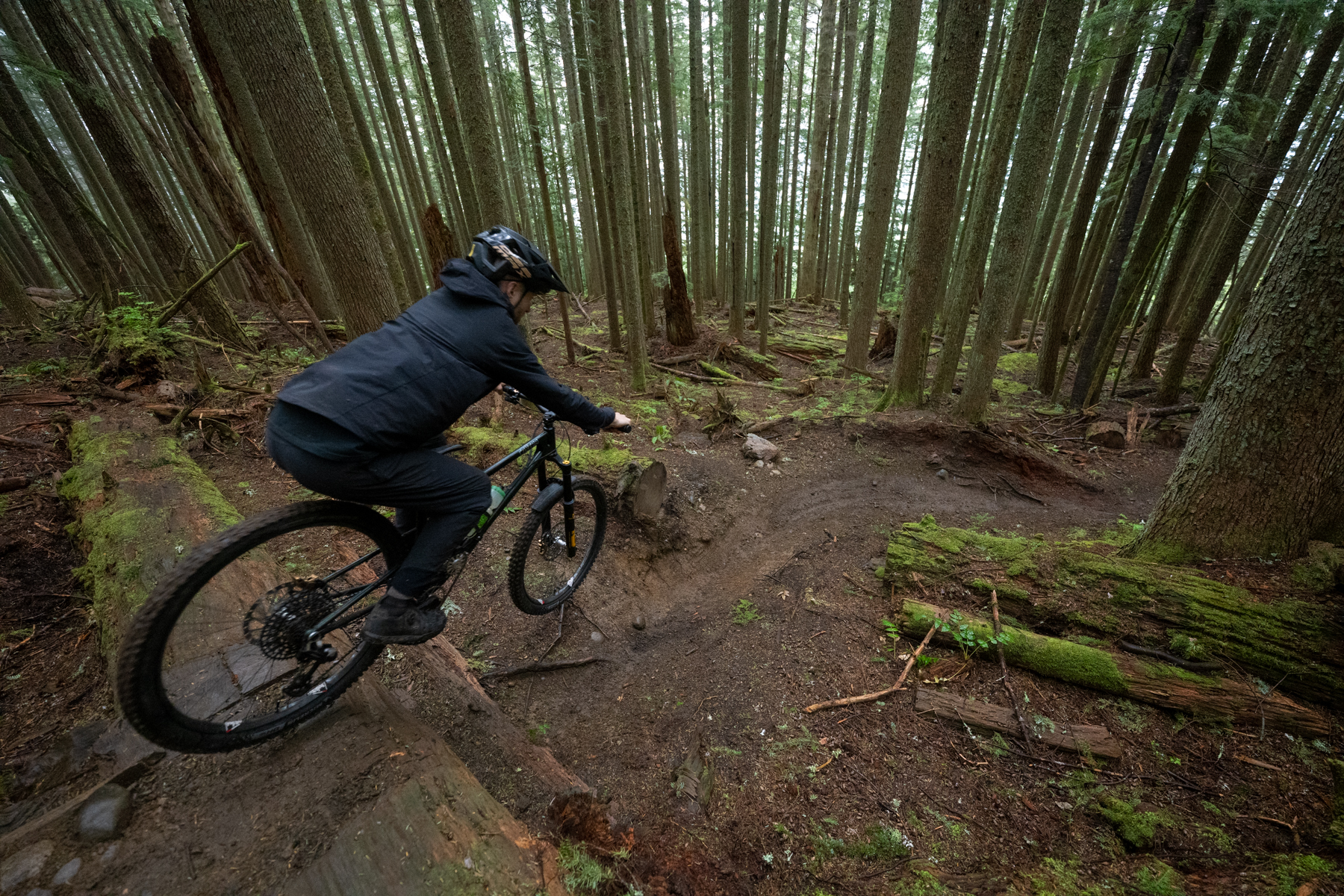
[For what it’s worth, an X0 Transmission derailleur, battery, and Rocker Pod controller weighs 529 g, vs. 592 g for an Eagle 90 shifter and derailleur, including the cable and housing. If you swap in the pre-Transmission AXS Rocker Controller — my preferred option among SRAM’s electronic offerings — the X0 Transmission package jumps to 577 g.]
Compared to SRAM’s pre-Transmission Eagle groups, I greatly prefer the gear spacing offered by the newer Transmission cassettes, too. The jump between the 42-tooth second and 52-tooth first gears on the non-Transmission Eagle cassettes just makes for a bigger change in cadence than I want, and while I like the tighter spacing at the low end (45 to 51 tooth jump) of Shimano’s 12-speed cassettes even more, the Transmission setup (44 to 52 tooth) is tight enough that I’m generally fine with it.
Bottom Line
Zack: SRAM’s mechanical Transmission groupsets were a poorly kept secret ahead of launch, but one that was eagerly awaited by those of us who still love the dependability (and lack of battery charging) associated with mechanical shifting. While I’d love a more premium shifter option, the full Eagle 90 system works very well, especially in the resilience of the derailleur and its smooth shifting performance. It’s a welcome and worthy addition to SRAM’s Transmission lineup.
David: Fully co-signed. The Eagle 90 group works well, has proven to be pretty durable, and you can swap in higher-tier versions of many of the parts (most significantly the cassette and cranks) if you want to save some weight. A higher-end shifter with crisper action and a less vague overall feel is the only missing link in my book. The Eagle 90 one gets the job done and isn’t terrible relative to other similarly-priced options, but the lack of a higher-end upgrade option is unfortunate.
All told, though, the Eagle 90 group is a solid offering. It shifts well enough, has held up great for us, and is a worthwhile option for folks who are drawn to SRAM’s T-Type groups but don’t want electronic shifting — whether for cost, the need to manage batteries, or just on principle.

Great review.
And electronic shifting still sucks.
Thanks for acknowledging that reasonable people feel this way.
Great review. I’ve ridden XT a lot and recently switched a bike to Eagle 90, very happy with it.
That said, one thing to point out, while Sram doesn’t position it as “high-end”, it is expensive as a groupset. In the marketplace of mechanical drivetrains, it falls between XT and XTR price-wise.
Yes, I have been happy with it except for 2 issues:
1: the shifter. Exactly as you said. It’s not bad, it’s just that I have always gone for a bit nicer shifter:XT or X01.
2 I had some bad shifting at one point. Couldn’t figure it out. It was the mounting bolt had loosed a bit. It needs to be really tight!